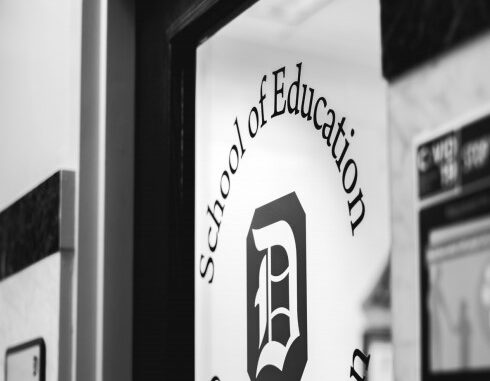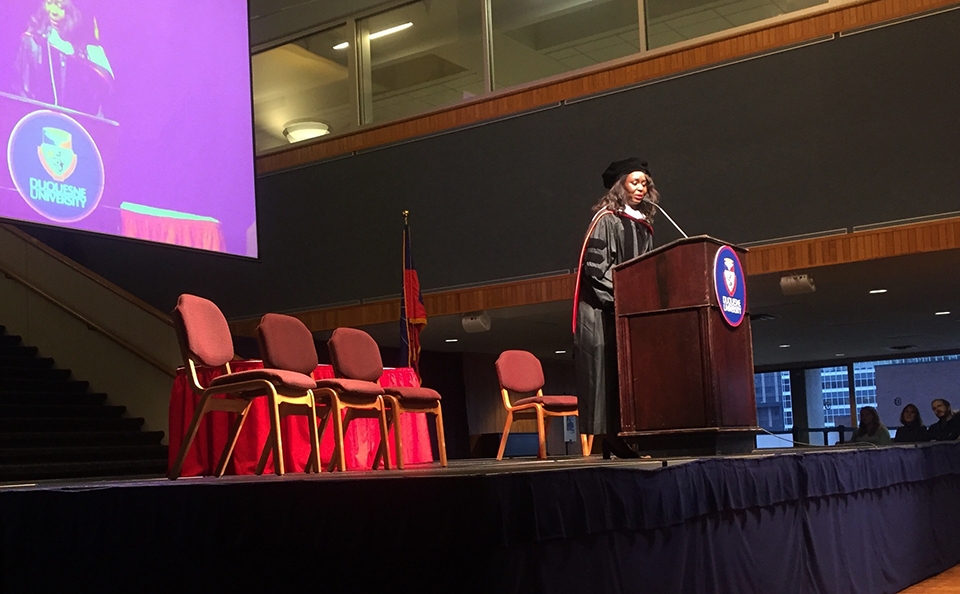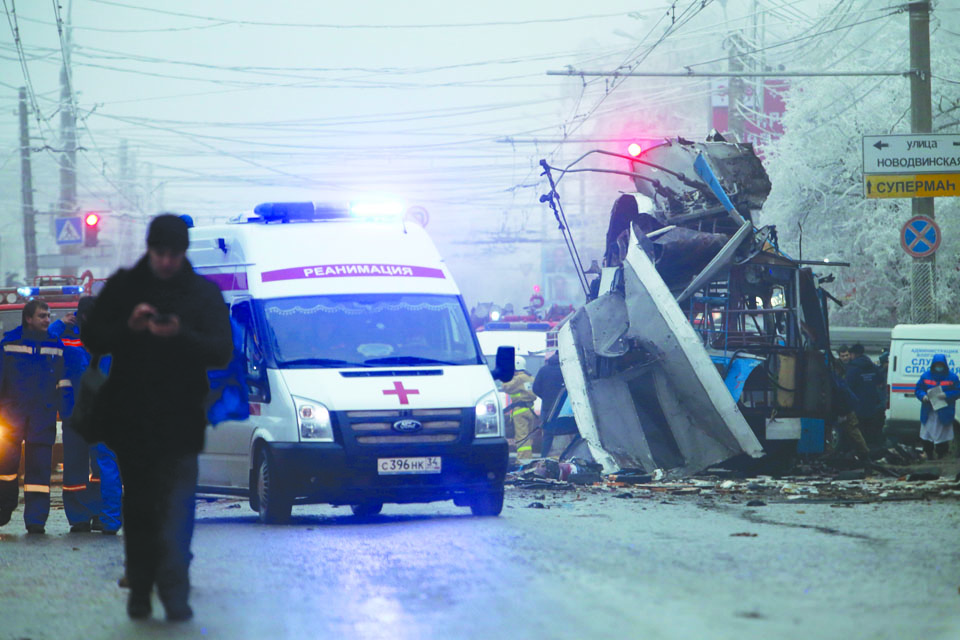
This is Part 2 of the series, Reckoning with Shank: A tenured professor, a racial slur and a reinstatement leave a predominantly white institution asking, Where do we go from here?
***
Equity and inclusion work in education is a “marathon, not a sprint”
To begin to dismantle systemic racism in educational settings, Duquesne education professor Darius Prier said that people must critique and examine those systems of higher education.
“Historically, these were not spaces and places where communities of color were to have access,” he said. “Advocates for an equitable, just and fair system must raise critical questions that inform transformative practices in higher education.”
The Director of Diversity and Inclusion at Duquesne, Anthony Kane, said that the university has already started to take several steps by being more vocal that incidents of bias, racism and hate have no place on the Bluff. He noted that key administrators have engaged in dialogue with students who have been impacted in these situations, and that students have taken charge and advocated for change in many areas.
“However, we must not get stagnant or forget that this work is never-ending,” Kane said. “We must continue to challenge ourselves to do more and do better for all those who represent marginalized identities.”
But to be fair and equitable, universities must acknowledge where they have not always been so – and commit to improving, expanding and enhancing their work to be fair and equitable.
“Then, I believe we will make true progress,” Kane said. “But progress does not equal success. This work is a marathon, not a sprint. As time goes on, we must continue to pass the baton.”
Prier said that the university, and Duquesne’s School of Education, followed due process, proper protocol and procedure regarding the Shank incident.
“Anytime the classroom space is felt as harm, rather than critical inquiry and engagement, swift action must be taken,” he said. The aftermath of the event is still unfolding, but Prier said that for Duquesne to move forward, part of creating change and a more inclusive environment is to hire more faculty of color, and recruit more students of color.
“When we have a diverse faculty and student body, it gives the university an opportunity to represent a more cross section of America,” Prier said. “In addition, the university gains knowledge and skill sets from diverse perspectives to help the institution to continuously rethink what a diverse community should look like.”
He also suggested that the university may consider creating an intentional administrative policy that would address racial discrimination, through the TAP [The Administrative Policies] system. The intention of this policy, Prier said, would be to protect faculty, staff, and students of color from racial discrimination.
“We have enough data at this point to understand communities of color need specific kinds of protections as we have done with TAP 31, regarding sexual misconduct and gender discrimination,” Prier said. “The implementation of such a policy would be a protect faculty, staff, and students of color from racial discrimination.
“We have enough data at this point to understand communities of color need specific kinds of protections as we have done with TAP 31, regarding sexual misconduct and gender discrimination,” Prier said. “The implementation of such a policy would be a proactive measure, demonstrating good faith efforts toward the maintenance of diversity and inclusion for communities of color.”
Social Justice: A Pillar of a Strong Education
Ganina Gonzalez was drawn into Duquesne’s School of Education because of the stress placed on the importance of social justice education.
“Teaching is an act of social justice,” Gonzalez said. “Through teaching, we can empower our students. We can affect change in the world. That really spoke to me.”
Gonzalez, who will be the incoming president of Kappa Delta Epsilon – the professional education fraternity at Duquesne – noted that one of the biggest things she’s learned from the university is to advocate for all students’ voices.
“White teachers need to listen to their colleagues who are people of color, and their students who are people of color. I think that teachers need to evaluate their own personal biases before they go into the classroom,” she said.
When teaching social justice issues, Prier said that white professors should approach the subject matter with “honesty, transparency, humility and vulnerability with their students.”
“The absence of what you don’t know, particularly in the area of race, can be very damaging, hurtful and harmful to students,” he said. “Consequently, students of color often live out the absence and effects of what white society may not know.”
Prier said that white professors should admit that they may have some “blindspots” around race and social justice. Professors should come to the table with students, ready to do the necessary work to learn what they don’t know and hear students out – who may be some of their best teachers in the area.
“Social justice work requires a shift in power dynamics, regarding where knowledge may emerge, and how we determine the authority over such knowledge,” Prier said. “In this context, your diverse student body, or the community itself, may become key stakeholders and ‘teachers’ to topics on race and social justice in education.”
For white allies, Kane said that their role is simple: stand up, speak out and demand change when racially charged incidents occur. But, in the moment, it’s not as simple as it sounds.
“White bystanders must be willing to get uncomfortable when standing up to bigotry and speaking out against hate speech, language and actions,” Kane said. “Too often, those who have been victimized are left to pick up the pieces and keep fighting. This allows us to be block[ed] out and ignored for ‘repeating the same message.’”
Regarding the Shank incident, Gonzalez said the “swift reply” by School of Education interim dean Gretchen Generett was impressive; but she was less pleased with the university’s response. Generett declined to comment for this article; but in September, she wrote that the incident was a “teachable moment.”
“As an educator, you should always be mindful of the impact of your actions on the students you are obligated by the profession to teach,” she wrote. “Your intentions are of no consequence when a student’s learning is disrupted by what you believe to be okay. Your actions are what students will remember.”
But on the same day Shank was placed on paid leave, Dannielle Brown – the mother of Marquis Jaylen “JB” Brown, who died after falling from a Brottier Hall window in October 2018 – held a rally on campus to demand Duquesne officials act into an independent investigation regarding her son’s death. Duquesne then emailed a statement campus-wide citing “strong disapproval” of the march – at the same time the video of Shank was gaining traction online.
“You’re going to smear Dannielle Brown’s name the same day that you have to retract and say, ‘Oh, we do care about Black people,’” Gonzalez said.
Transforming pain and ignorance into a “teachable moment”
As School of Education Dean Gretchen Generett suggested, Prier said he immediately used the incident as a “teachable moment” with his students. Prier, who teaches a Social Justice in Educational Settings course, recalled that his students were very unsettled by the incident, and that “silence was not an option.”
“Unfortunately, this event opened up an existing wound regarding racial tensions at the university,” Prier said. “This is not a point of condemnation so much as a fact of social reality that has occurred on this campus. The events happening internally within Duquesne University is a reflection of the racial polarization that has boiled nationally.”
Rather than ignore the issue, Prier and his class – most of whom had Shank – launched a discussion on how educators can approach topics around race, language and culture in the classroom. Students discussed what ways they can provide historical, social, political and cultural contexts to their treatment of race in schools, how pedagogical parameters can be set up and the difference between rigorous versus offensive content that harms students.
“It was my goal for students to begin unpacking these questions as future teachers who may end up in a diverse school district, where similar issues may arise,” Prier said.
Racial issues have been prevalent in Pittsburgh-area school districts – especially as of late. In March, a South Fayette High School teacher caught fire after an assignment asking students if “the slave trade was profitable.” In January, a school board member in the Gateway School District resigned after sending a text message to other school board members asking if a woman applying for a job in the district “dat[ed] the darkies.” And in November, two members of the Peters Township High School band wore all-black bodysuit costumes that some perceived to be the modern-day equivalent of blackface.
“If we are going to actually help our students out and explain the full scope of American history to them, we have to let them know that racism was an issue, still is an issue and will continue to be an issue,” Ganina Gonzalez, an education student, said. “I hope that my students will get to see a better tomorrow where we’re combating institutionalized racism.”
This semester, the School of Education launched an Education Equity Certificate – which Prier is directing. The program is open for sophomores with a 3.0 GPA, across majors, who want to “engage K-12 school systems and the surrounding community through a social justice lens.”
“This program asks the bigger questions that shape students as critical citizens of the world, to meet the imperative of social justice,” Prier said.
In higher education, Kane said that systemic racism isn’t new – in fact, it has existed throughout the history of higher education, and cited research that shows that many universities “were not created with the intention to serve diverse populations, but instead to serve solely white men.” He said that colleges and universities must confront the “hard history,” and “undo hundreds of years of what has been done.”
“Luckily for Duquesne, our founding story is more progressive and equitable than many universities. We were founded to serve those in the margins, and we have humble beginnings in the Hill District above a bakery,” Kane said. “However, we do have a role to play in combating social injustices and inequities and to do work to ensure that we continue to honor our mission and serve those on the margins.”
He said that inclusion must become a part of who Duquesne is, and what the university represents — not just something people do because of the fear of the impact of not doing it. “I challenge my students and colleagues to keep me honest and focused as the center looks to remain the hub of resources and support for diverse students,” Kane said.
***
To continue reading, please see Reckoning with Shank, Part 3: Open and Honest Conversation; Teaching Race in Predominantly White Classrooms.




